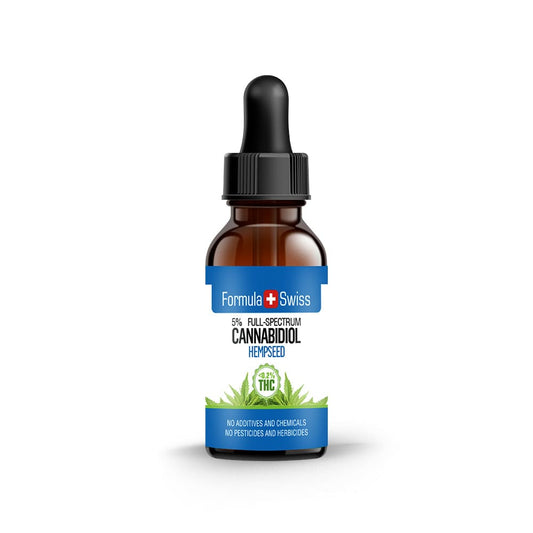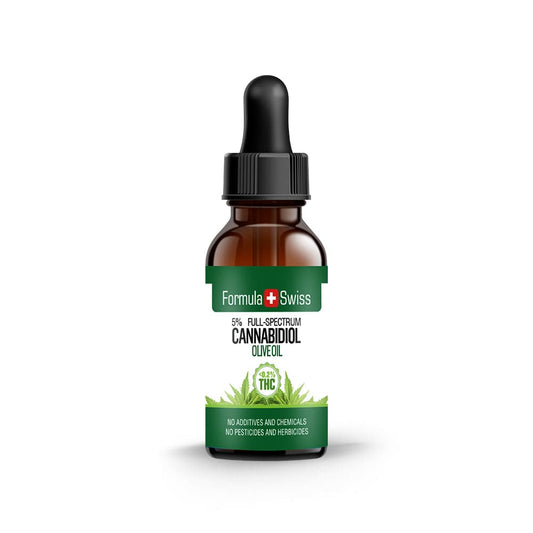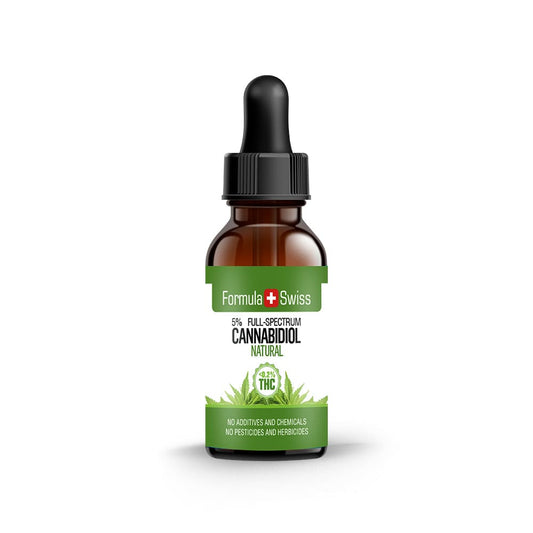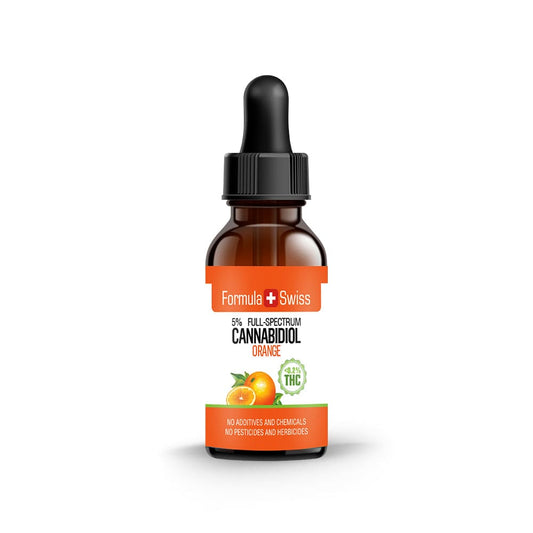Among the most frequently discussed, and often misunderstood, is marijuana. While it is commonly associated with recreational use, marijuana represents just one part of the broader cannabis genus, with unique characteristics that distinguish it from its hemp counterpart.
As someone who has spent over a decade immersed in the cannabis field, with a specific focus on CBD and hemp production, I’ve had the opportunity to closely examine the many dimensions of this remarkable plant.
In this article, I’ll explain what marijuana is in clear and factual terms. At its core, marijuana refers to varieties of the Cannabis sativa plant that contain higher concentrations of the compound tetrahydrocannabinol (THC). This naturally occurring chemical is primarily responsible for marijuana's psychoactive effects.
However, marijuana is far more than just its chemical profile. Its history, cultivation, and cultural relevance all contribute to its complex identity, which I’ll delve into in the sections that follow.
Save up to 30% when you order your CBD oil today
Key takeaways
- An understanding of cannabis beyond common misconceptions.
- Recognition of the diverse uses and effects of marijuana.
- An appreciation for the plant's historical and cultural journey.
- Knowledge of the distinction between hemp and marijuana, crucial in informed discussions.
This article is provided for informational purposes only and does not relate to any of the products available in our webshop. For more information, please see our full disclaimer.
Understanding what marijuana is
Exploring the origins of marijuana reveals a rich and complex history rooted in ancient civilisations. According to a peer-reviewed article published in P&T: A Journal for Managed Care and Hospital Formulary Committees, evidence suggests that marijuana was utilised more than 5,000 years ago in what is now Romania, indicating its longstanding presence in human society.
Furthermore, archaeological findings have identified Δ6-tetrahydrocannabinol (Δ6-THC) in ancient ashes, providing the first direct indication of its use dating back to around 400 AD. This is reflected in the diverse terminology and evolving perceptions surrounding the plant today.

The slang for marijuana has changed over time. It varies a lot across cultures and places. For example, "weed" is common in the West, while "ganja" is used in Asia. The names for cannabis are as varied as its history.
- Learning about these terms is not just for fun. It also helps us understand social issues.
- Each name has its own meaning, seen differently by the public.
- The names we use today tell us a lot about how society views and uses marijuana.
My journey into this topic aims to connect the past with the present. It's about seeing how history has shaped our views on cannabis. As we talk more about cannabis worldwide, knowing these basics is key for any serious discussion or policy.
I've been studying marijuana's complex chemistry. I look at THC and CBD, the main cannabinoids. An article published in StatPearls highlights that THC is the main psychoactive part, changing how we think and feel. CBD, on the other hand, doesn't make you high and is being researched for various uses.
I find THC and CBD fascinating. THC is known for its effects on the mind. CBD is drawing interest for its non-intoxicating properties.
| Compound | Psychoactive |
|---|---|
| THC | Yes |
| CBD | No |
The cultural significance and historical use of cannabis
The story of marijuana in society is long and varied. It reflects the cultural presence of the plant across different aspects of life. From ancient times to today, marijuana has influenced communities and traditions in many parts of the world.
Historically, marijuana featured in spiritual practices and traditional rituals. Its presence and meaning differed depending on the region and era. As policies and public attitudes shifted, so did how marijuana was regarded and incorporated into cultural settings.
Today, marijuana holds relevance in a wide range of cultural contexts. Its influence appears in creative expression, spiritual practices, and recreational environments. It remains a topic of discussion in relation to evolving perspectives and societal attitudes, contributing to how aspects of contemporary culture are shaped globally.
Hemp and marijuana: Understanding the difference
Many people confuse hemp and marijuana, but they are distinct varieties of the Cannabis plant. A closer look at their THC content and practical uses reveals clear differences.
Industrial hemp: Applications
Hemp is a highly versatile crop with a growing range of uses. It contains very low levels of THC, typically less than 0.3%, which means it does not produce intoxicating effects.

Hemp fibres are strong and durable, making them ideal for manufacturing textiles, paper, biodegradable plastics, building materials, and biofuel. Its seeds are also used in food products and cosmetics due to their nutritional profile and oil content.
THC levels in hemp and marijuana
One of the most notable differences lies in THC concentration. While hemp contains only trace amounts, marijuana can have THC levels reaching up to 30%. This significant contrast influences how each plant is cultivated and processed for different end products.
Hemp’s low THC content makes it a dependable choice for industrial and commercial purposes. Marijuana, on the other hand, is cultivated for its psychoactive qualities and other specific uses.
Understanding the chemical and practical distinctions between hemp and marijuana allows for smarter applications of cannabis-related resources. As innovation continues, hemp’s potential to replace conventional materials in a range of industries grows stronger, making it an important part of sustainable production.
Order and enjoy up to 30% off your CBD oil purchase
Growing marijuana: From seed to harvest
Growing marijuana is more than just planting seeds. It needs a deep understanding of the plant's growth and keeping it healthy. Each stage of growing cannabis brings its own challenges and rewards, making me better with each crop.
The cultivation process
The cannabis growing journey starts with choosing top-quality seeds. These seeds must have the right genes to grow well in my care. Moving from germination to growing requires careful attention to light, food, and water.
As plants grow, they need different care, like during the flowering stage. Here, controlling light is key to growing good buds.
Harvesting cannabis is a delicate task. Timing is everything. Picking buds too early or too late can affect quality and strength. This makes the harvest a rewarding challenge.

Challenges of growing cannabis
The journey to harvest cannabis is full of hurdles. These include fighting diseases, pests, and keeping plants healthy. But the joy of growing a thriving plant and getting good yields is worth it.
Seeing a seed grow into a plant with buds is incredibly rewarding. It's a feeling hard to describe.
- Monitoring climate conditions to ensure optimal growth environments
- Adjusting feeding schedules to meet the changing needs of the cannabis plant through different growth stages
- Implementing integrated pest management systems to keep damage to a minimum
Understanding the cannabis lifecycle is key to getting the best yield and quality. Harvesting cannabis is a moment of great achievement.
The debate: Discussing marijuana's impact
The debate on marijuana sparks many opinions in society. I've looked into the impact of cannabis from multiple perspectives. I've found both supportive and critical views on the subject.
I've studied many discussions and findings related to potential concerns with cannabis. These include immediate and long-term effects. People hold a variety of opinions—some focus on possible benefits, while others highlight perceived drawbacks.
| Perspective | Viewpoint | Concern |
|---|---|---|
| Medical community | Cautious support | Long-term effects are poorly understood |
| Industry framework | Risks and considerations | Consistency in practices |
| Public opinion | Mixed | Social acceptance vs. public safety concerns |
The debate on marijuana continues to expand, as does the need for detailed research. These studies should examine their practical uses and social impact.
Without a full understanding, important aspects of marijuana’s role and boundaries may be overlooked. A balanced and well-informed perspective is essential in addressing this complex topic.
Marijuana in pop culture and media
Marijuana and pop culture are deeply connected in music, film, and literature. This shows a strong cannabis influence that changes how we see things and adds to art. It shows how society views marijuana and helps change the media. I've seen how marijuana is shown in different ways. It sparks conversations in many places.

Marijuana has a long history in music, like in reggae and hip hop. It stands for rebellion and freedom. Movies that feature marijuana often talk about counterculture and being different. Books also explore how marijuana affects people and society.
- Influence on music, film, and literature
- Changing perceptions through media
Cannabis has a big impact on how we see it in media. From being rebellious to being accepted, it changes how we think about it. This shows how marijuana is a big part of today's media.
The link between marijuana and pop culture is exciting to study. It will keep changing how we see marijuana and its role in media.
Order CBD oil now and save as much as 30%
Marijuana tourism: A growing industry
Marijuana tourism is booming, thanks to new laws and a growing love for cannabis. It offers unique experiences like tours of grow sites and tastings at top dispensaries. More people are now looking for cannabis-focused travel.
Places that allow the use of marijuana are seeing more visitors. Businesses are creating special packages for weed lovers. You can find hotels, restaurants, and wellness spots that welcome cannabis use.
This trend shows a big change in how we view marijuana. More people are comfortable using it. It also helps local economies and creates jobs.
Personal perspective
Marijuana and hemp often get confused in everyday discussions, even though they serve different purposes and have very different characteristics. Marijuana contains a much higher level of THC, which is known for its strong effects, while hemp has only a small amount and is often used in products like textiles, cosmetics, and building materials.
After more than ten years working in the cannabis and CBD industry, I’ve found that clear and simple explanations help people understand these differences more easily. When we talk about these plants in a straightforward way, such as how they grow, what they offer, and how they are used, we give people the chance to learn without confusion. Clear knowledge builds confidence and makes conversations more useful.
Don’t miss out—save up to 30% when you purchase CBD oil today
Frequently asked questions
What exactly is marijuana?
Marijuana, also known as cannabis, is a plant that contains compounds like THC and CBD. These compounds influence how it is perceived and used.
Why does marijuana have so many different names like cannabis, weed, and ganja?
Marijuana is known by various names due to its historical and cultural presence in different parts of the world. Each name reflects a specific context or tradition.
What are the effects of THC in marijuana?
THC is a compound in marijuana that interacts with the brain and can alter mood, perception, and behaviour.
How does CBD differ from THC?
CBD does not cause the same intoxicating effects as THC. It is being examined for its wide-ranging applications.
How has marijuana been used historically?
Marijuana has played different roles throughout history, often linked to rituals, industry, and cultural practices across regions.
How does modern culture perceive cannabis?
Attitudes towards cannabis vary widely. While some associate it with creativity and social trends, others focus on its broader implications in society.
What does it take to grow marijuana successfully?
Successful cultivation of marijuana requires specific knowledge, including how to manage lighting, airflow, water, and plant care. Attention to detail is essential.
How does marijuana influence music, film, and literature?
Cannabis has influenced various forms of art. Its presence in music, film, and writing often symbolises creative freedom and social commentary.
Can media representations of cannabis affect public perception?
Yes, media portrayal can significantly shape public opinion. Positive or negative framing may influence how people view cannabis and its place in culture.
What is marijuana tourism and why is it growing in popularity?
Marijuana tourism involves visiting destinations where cannabis is part of the local experience. Interest has grown as it becomes more integrated into hospitality and cultural offerings in certain areas.
Difference between cannabis, marijuana and hemp






